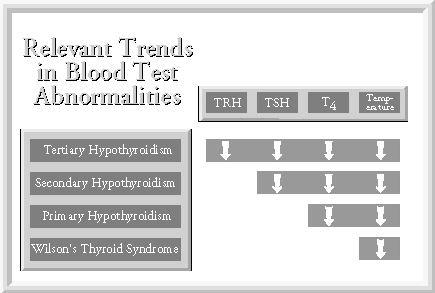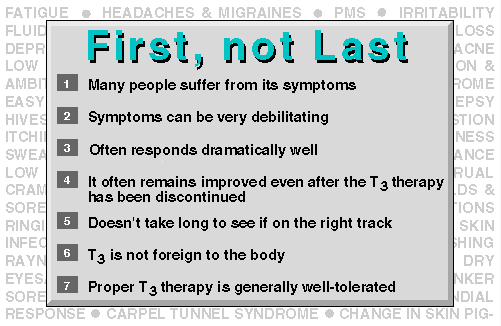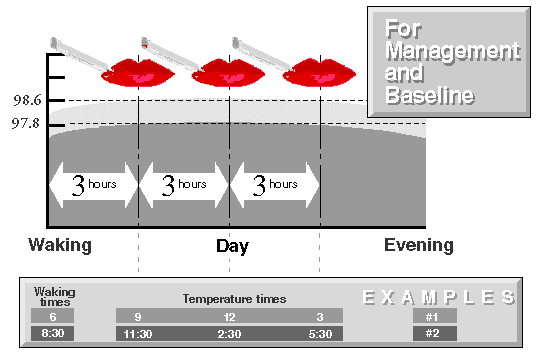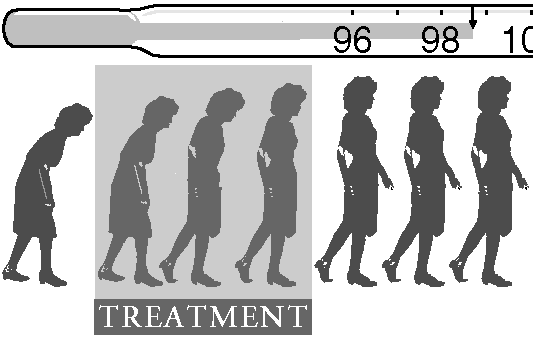Although many conditions can cause symptoms similar to those of Wilson’s Temperature Syndrome, there are several reasons that Wilson’s Temperature Syndrome should be considered frist and not last, in patients with these types of symptoms.
First, there are many people who suffer from these kinds of symptoms.
Second, these symptoms can be incredibly debilitating and they meet, in spades, the “so-what” criterion.
Third, these symptoms are very often thyroid-responsive, and they often respond dramatically It is a simple thing to try and can be an easy solution to a lot of problems.
Fourth, with Wilson’s Temperature Syndrome, there is a good chance the problem can be remedied, with the symptoms remaining improved even after the treatment has been discontinued.
Fifth, it does not take long for one to see how well the person is responding to the treatment (usually from 2 hours to 2 weeks).
Sixth, T3 is not foreign. Many of the medicines on the market today cannot be found in nature, much less the human body. But T3 on the other hand, is a molecule that is found in every human’s body, and has been floating around in everyone’s body since birth, being absolutely essential for life.
Seventh, most people tolerate proper T3 therapy very well.
While few things can make folks sicker, few things respond as dramatically to proper therapy as can decreased thyroid system function to proper thyroid treatment.
Thus, one should always maintain a high index of suspicion for decreased thyroid system function in patients with symptoms consistent with low thyroid function, and who have body temperatures that run below normal, on average.
Temperature to be taken orally, every 3 hours, 3 times a day, starting 3 hours after waking for several days (not the 3 days prior to the menses since it’s higher then). The average should be taken of each day’s readings. This method is preferred over morning underarm* method because: 1. The temperature mediates the symptoms; 2. It’s more specific; and 3. It gives more points on the curve.
*Used originally by Dr. Broda O. Barnes, who was the first to recognize the body temperature as a useful guide to thyroid treatment.
More than just a reflection of metabolic rate, I feel the body temperature, through enzyme conformation, actually mediates the symptoms of Wilson’s Temperature Syndrome.
And so, I am most interested in what the patients’ temperatures are when they are having their symptoms. The patients usually complain of symptoms that bother them throughout the day, and not usually just upon waking.
Since body temperatures normally run lower in the morning and higher in the afternoon, I feel day-time temperatures are more specific and less sensitive.
Patients should make sure to not drop their digital thermometers from higher than 4″ and to replace the batteries as needed (every 2 weeks? Or compare them wih a mercury therm.), or they may be inaccurate. Environmental legislation is making mercury thermometers less available. The important thing is to see the change in the temp with treatment.
I recommend oral temperatures because they are reliable and convenient, taking only 5 minutes instead of 15 minutes underarm (patients shouldn’t drink hot or cold liquids during the 15 minutes before taking the oral temperature).
I don’t usually measure a person’s temperature in the office for diagnosis or management of treatment, because one temperature by itself does not tell one much. Also, there is a chance that the temperature may be unnaturally high or low in the doctor’s office.
As it turns out, the patients who respond well to T3 therapy have temperatures that run low not only upon waking, but also on average during the day.
More than one point on the temperature curve per day is needed (to gauge T3 level steadiness) in the management of T3 therapy (p118).
Patients who “know” their temperatures are normal are often surprised to find that they do on run low on average when measured.
I use the same temperature standard of 98.6 in all people regardless of their age, size, sex, hormonal status (e.g. premenopausal/postmenopausal), or otherwise.
This is because enzyme function depends on enzyme conformation. An enzyme’s conformation is mediated by its temperature and its structure (determined by the genetic coding of its amino acid sequence), and I don’t think the genetic coding of the enzymes changes appreciably under these various circumstances.

Patients who “know” their temperatures are normal are often surprised to find that they do on run low on average when measured.
I use the same temperature standard of 98.6 in all people regardless of their age, size, sex, hormonal status (e.g. premenopausal/postmenopausal), or otherwise.
This is because enzyme function depends on enzyme conformation. An enzyme’s conformation is mediated by its temperature and its structure (determined by the genetic coding of its amino acid sequence), and I don’t think the genetic coding of the enzymes changes appreciably under these various circumstances.

More to the point, I have not noticed any significant variation in predictive value of the 98.6 degree standard in these various circumstances. That is, regardless of age, sex, weight, or hormonal status, patients are still most likely to feel well when their temperatures are close to 98.6 degrees.

If the blood tests show that for whatever reason, T4 production is inadequate, then T4 supplementation would be a good approach to choose.If the blood tests show that T4 production is normal, and no other great explanation for the patients symptoms can be found, a therapeutic trial of T3 might be considered.
In a sense, the treatment is the test for Wilson’s Temperature Syndrome (p144).
If a biochemically euthyroid person’s classic low thyroid symptoms respond well to proper T3 therapy, then by definition, they have/had Wilson’s Temperature Syndrome.
It is very compelling that the symptoms and temperature often remain improved even after the treatment has been discontinued.
It’s not so much a question of whether proper T3 therapy works, in terms of improving many of these patients’ symptoms, because it does. Perhaps a better consideration is whether the treatment is physiologic or pharmacologic.
The best evidence that the treatment corrects a physiological problem is that the symptoms often remain improved even after the treatment has been discontinued.
When considering a therapeutic trial it is good to consider the alternatives, and the pro’s and con’s of each. Avoiding stress, plenty of exercise, and eating well can sometimes correct the symptoms.
One alternative is non-treatment. Persons with Wilson’s Temperature Syndrome often remain symptomatic for years without treatment, and their conditions can worsen gradually over time, especially in stages after successive stresses.
Sometimes, if a person with Wilson’s Temperature Syndrome can get out from under stress, and get good nutrition, and proper exercise, her Wilson’s Temperature Syndrome can resolve. In other cases, all the dieting and exercise in the world does not seem to have any effect, in which case definitive treatment may be necessary to eradicate the symptoms, and restore the patient to good health.
Note: If a person with Wilson’s Temperature Syndrome is not going to get definitive T3 therapy to treat it, it is not recommended that she diet excessively should she want to lose weight. The decreased caloric intake can cause a further reduction in T4 to T3 conversion, and actually make the Wilson’s Temperature Syndrome worse. In such cases the patient will typically, after the diet, gain all of her weight back and then some. In fact, some such cases don’t lose weight at all, but actually gain weight, since the decrease in the metabolic rate is greater than the decrease in caloric intake. Also, crash diets can sometimes bring on Wilson’s Temperature Syndrome in people who were not previously symptomatic.
Other alternatives to T3 therapy include psychotherapy, behavioral modification, biofeedback, hormonal (e.g.-female hormones, adrenal hormones) approaches, nutritional approaches, etc..
I know of no other approach that has the advantages of a therapeutic trial of T3 therapy; primarily because of how predictably the patients respond, because the patients can begin to respond within hours and usually within days, and because the symptoms can often remain improved even after the treatment has been discontinued.





